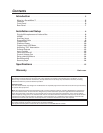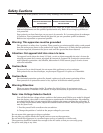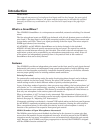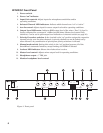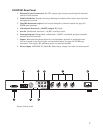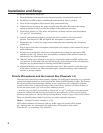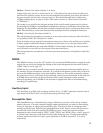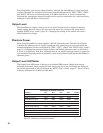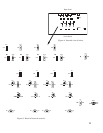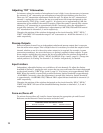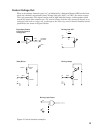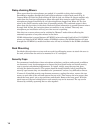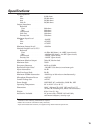
Mode 2…Priority Pre-select switches (1-4) Down
In this mode, only one mic at a time can be “on.” The lockout bus shuts down all other mics
until the first speaker pauses. As soon as the controlling microphone goes silent, the lockout
bus goes inactive and any other mic can come on. This switching takes place without any
syllable-grabbing delay, or pops or clicks. (This mode is known as “First-come-first-served”
or “Filibuster.”)
This mode is very useful when the gain setting of the overall sound system must be close to
the threshold of feedback, and additional microphones coming on could throw the system into
feedback. The SmartMixer will not allow multiple microphones to be on at the same time in this
mode. The switching is so fast and silent that the meeting can still be completely interactive.
Mode 3…One Priority Pre-select switch Up
The selected priority microphone can come on at any time and can mute any other mic that is
on (popularly called “The Chairperson” mode).
(Note that there may be special circumstances where two or three mics could be set to priority,
so those speakers could talk whenever desired, but still mute one or two non-priority mics.)
If multiple SmartMixers are used with AT8325/1.0 Link Cables, Priority Pre-select switches
on all channels in use will have the control effects described above.
The selected priority microphone(s) will mute only those non-priority microphones within the
same unit.
NOMA
The NOMA is factory set in the “off ” position. To turn on the NOMA function, unplug the unit,
remove the top cover and change the setting of the switch designated on the circuit board by
“SW25” (Figs. 4 and 5, page 11).
NOMA serves to maintain overall system gain by proportionately reducing amplifier gain as
the number of open microphones increases. In a sound reinforcement system, this can tend to
preserve the feedback margin and system stability. However, this action necessarily reduces
the sound level of each individual person speaking, which may not be desired. In the end, use
of NOMA often comes down to the preferences of the system’s designer and/or operator.
Generally speaking, use of NOMA is not desirable in applications such as teleconferencing,
recording or broadcasting.
Auxiliary Input
The Aux input is an RCA jack accepting auxiliary-level (–10 dBV) input from sources such as
tape decks and VCRs. There is no signal processing of the Aux input.
Preamplifier Gain
The SmartMixer has a substantial gain range, allowing it to accept a wide variety of micro-
phones. However, if in some instances higher-output microphones are used for close talking,
it may be necessary to reduce the preamplifier gain. This can be done by changing switch
settings inside the unit. With the unit unplugged from its AC source, remove the two screws
on each side of the unit and carefully lift off the top cover. Locate the internal switches
designated on the circuit board by “SW2,” “SW8,” “SW14” and “SW20” (Figs. 4 and 5, page 11).
A “control map” drawing will be found on the inside of the top cover. Changing the settings
of these internal switches will cause a gain reduction of 10 dB for channels 1, 2, 3 and 4
respectively.
9





